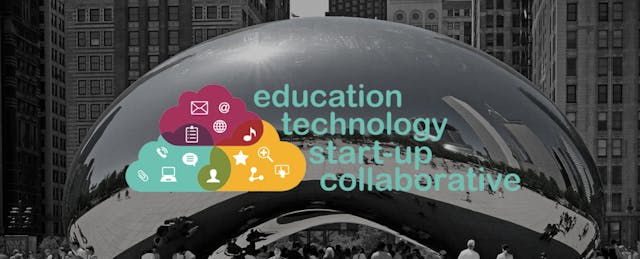Last week, the EdTech Collaborative Personalized Learning Summit brought together more than 400 teachers, entrepreneurs, and administrators across two sunny Chicago days. The Thursday sessions featured panels and hands-on activities were geared for administrators leading blended learning initiatives in their districts. The following day included workshops and panels about STEAM, building literacy and personalized learning.
The conference, now in its third year, aims to bridge those in the edtech industry with the learners in the classroom—including students, who aired their views on technology in schools, according to organizer and ThinkCERCA CEO, Eileen Murphy. “Giving teachers and leaders having a chance to meet entrepreneurs and give feedback was the original goal of the EdTech Collaborative, but now that the products have evolved through these collaborations, the goal has evolved into documenting, disseminating, and building upon how other people used the products.”
Here are the three takeaways from the event:
Crisis and Opportunity
It’s not always sunny for Chicago Public Schools, which is billions of dollars in debt. But where there are problems, entrepreneurs see opportunities.
"By nature technology and innovation are about doing more with less,” says Murphy. “Ultimately, 50 percent of the dropouts in our country come from 12 percent of our schools. If those students as early as kindergarten or preschool could have had intervention and personalized learning, we wouldn't have all the costs associated with dropouts.”
Technology can be a part of the solution. “If you have a tech that solves real problems, shows traction or viability from a monetization standpoint, I would say Chicago is the place to be,” says Murphy. "We have an incredible ecosystem here, perhaps minus the capital [availability]. Sources of capital are important, but not the only ingredient in a good ecosystem.”
Key to the ecosystem is the adoption of national academic standards, explains Murphy. Rather than developing 50 different versions of a product to meet each state’s requirements—which made it hard for startups to compete with bigger players—46 states have agreed to the same set of standards. This means “there is less fragmentation. You can build one thing and have a viable product in 50 states,” she says.
In addition, with the adoption of online assessments, schools are also better equipped with the broadband infrastructure. As devices and Internet access make their way into the classroom, many educators are opening their eyes to tools that can help them deliver personalized learning, according to Chaula Gupta, vice president for the Chicago Public Education Fund. This includes both student-facing tools, along with services that support teachers’ professional development.
Another key ingredient to the Chicago edtech ecosystem are the nonprofit organizations and foundations linking companies, schools and research organizations, according to Amy Huang, Director of NextGen Expansion for LEAP Innovations. Her group is building a R&D hub that offers programs that connect bring educators, entrepreneurs, and researchers to build learning tools, and help redesign schools to make the best use of them.
Untapped Areas
Even though education technology is an $8 billion market in the US, there are still unmet needs waiting for entrepreneurs to tackle. Huang, for instance, sees a lack of science-related tools. Murphy predicts that scarcity will change as the Next Generation Science Standards take off. (NGSS currently counts 26 states as “lead partners.”) As these standards call for skills in design, engineering and media creation, Murphy says it’s a safe bet that teachers will be on the hunt for quality instructional materials.
Given the vast number of tools available, Gupta says there is still a need for curation services that “help districts and schools make smart choices about which products to use. What I hear from a lot of educators is that choosing the right products takes too much time and is too expensive. You can't just take three days to try one product and the next week try something else.” Chicago Public Schools will be taking a step in the direction this summer with the launch of an “interactive software portal.”
Badges That Matter
Can education technology tools bridge the learning in school and real-world experiences? Agnieszka Pietzrak, a teacher at the St. Ferdinand Elementary School in Chicago, shared how tools like Youtopia, which gamifies learning experiences, can foster positive behavior and help students develop socio-emotional skills outside of the classroom.
The platform divides large projects into small steps and identifies skills that the student has to develop to accomplish them. Students who master the skills earn a badge. “It is a powerful tool to take the skills that are intangible and make them tangible,” says Pietrzak. Youtopia has worked with Hive Learning Network, a community-based organization that offers after-school programs for 21st century skills, to build a badging ecosystem for STEM projects.
With an active, supportive community that bridges formal and informal learning, teachers and entrepreneurs, Chicago’s edtech ecosystem is stepping up to offer broader education opportunities for all learners. As Stanford economist Paul Romer once said, a crisis is a terrible thing to waste, and both educators and entrepreneurs in the Windy City are making the most of it.


